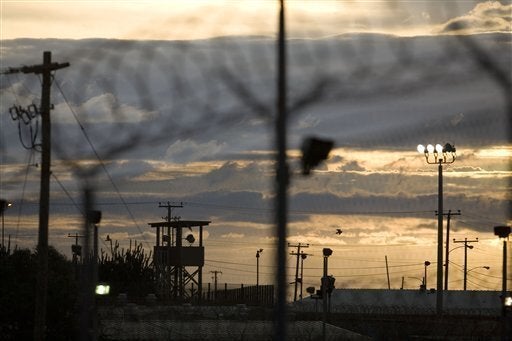
Interrogators are lauding President Obama for signing an executive order that will shut down secret CIA prisons and place the use of coercive interrogation techniques completely off limits.
"[The order] closes an unconscionable period in our history, in which those who knew least, professed to know most about interrogations," said Joe Navarro, a former special agent and supervisor with the FBI.
"Some die-hards on the right -- who have never interrogated anyone -- are already arguing that forcing interrogations to be conducted within army field manual guidelines is a step backward and will result in 'coddling' dangerous terrorists," retired Colonel Stuart Herrington, who served for more than 30 years as a military intelligence officer, said soon after the order was signed. "This is a common, but uninformed view. Experienced, well-trained, professional interrogators know that interrogation is an art. It is a battle of wits, not muscle. It is a challenge that can be accomplished within the military guidelines without resorting to brutality."
The way interrogation works is largely misunderstood by the general public and some senior policy makers, according to Navarro, Herrington and other intelligence professionals.
"Interrogation is not like a faucet that you can turn on - and the harder you turn, the more information will pour out," explains Herrington, who conducted a classified review of detention and interrogation practices in Iraq for the U.S. Army.
* * * * * *
Getting a suspected terrorist to talk is much more subtle than what one typically sees in the movies or on TV. A new book, How to Break A Terrorist by Matthew Alexander (a pseudonym), provides an inside look at how interrogation can yield more information if it is done humanely.
Alexander developed the intelligence that led U.S. forces to al-Zarqawi, the former chief of Al Qaeda in Iraq. While some were using abusive techniques to try to crack detainees, Alexander used a smarter, more sophisticated approach. He learned what the detainees cared about and then used that information to get what he wanted.
For example, his first big break came when he interrogated a cleric who was an Al Qaeda operative. The cleric said he would like to "slit" Alexander's throat "and watch you die" when the interrogation began. Three days later he gave up critical info that led directly to Zarqawi.
What changed? Alexander learned, through patient questioning, that the detainee had joined Al Qaeda to keep his family safe. The cleric identified key Al Qaeda hiding places as soon as Alexander showed that he could -- and would -- protect the cleric's family.
Another recently published book, Mission: Black List #1 by Staff Sergeant Eric Maddox, shows how the author, an interrogator stationed in Tikrit, developed the intelligence that led to the capture of Saddam Hussein. Maddox was hunting one of the most wanted men in Iraq. Like Alexander he did not try to "break" detainees by beating them up; he talked to them.
Maddox was an information junkie who patiently interrogated hundreds of detainees and slowly pieced together a picture that led him to Saddam. He also intuitively understood that, if possible, you want the detainees to not only answer your questions, but also tell you which questions to ask. He induced a detainee who was a close friend (and former driver) of one of Saddam's closest confidants to join his "team." The former driver joined Maddox in interrogations. Detainees "broke" the moment that Maddox and the former driver started interrogating them.
As Maddox and Alexander have proved, these are the sorts of techniques that work in the interrogation booth. Professional interrogators believe that the president's action not only returned the U.S. to high ground, they refocused U.S. intelligence operations on techniques that are effective.
* * * * * *
"The quality and quantity of intelligence we can gather will now begin to increase," said Torin Nelson, an intelligence professional who served as an interrogator with the U.S. Army and private military contractors.
To illustrate how torture can lead to poor intelligence, Nelson cites the case of Al-Libi, a detainee who was tortured and, under duress, gave misinformation about a connection between Iraq and Al Qaeda. (Secretary Colin Powell quoted intelligence gained from Al-Libi as justification to go to war with Iraq.)
Nelson, president of the Society for Professional Human Intelligence, said that he hoped we could end debate about whether or not torture works and instead work on providing interrogators with the training and resources they need to do their jobs effectively.
"The challenge we face does not have to do with so-called 'enhanced interrogation techniques,' " said Nelson. "We don't want those. What we do need is to build a world-class interrogation corps. To do that, we need to pay more attention to recruiting, training, and managing interrogators. President Obama's executive order is an important first step but there is still more to do."
David Danzig directs the Primetime Torture Project at Human Rights First, a New York City-based international human rights organization.